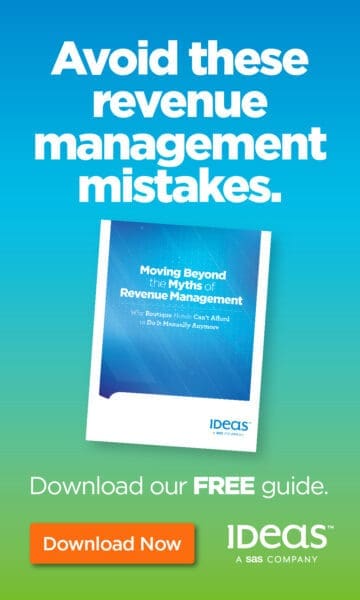One does not need to study the current news cycle or stock market madness to know that the hotel industry, and all travel companies, are in for some very tough sledding as a direct result of the COVID-19 pandemic. Just ask your revenue manager to generate a pace report!
(Download the ehotelier Coronavirus staff briefing paper to distribute to your team, or to assist you to brief your staff. Or enrol in eHotelier Academy free course Coronavirus Awareness)

It is time for sobering reality; you should not count on any real turnaround until mid-May, perhaps even longer. Living through the SARS epidemic here in Toronto in 2003, hotels in the downtown core ran on single-digit occupancies. This is not to say that COVID-19 will have parallel results but remember that SARS did not even trigger a national emergency, nor did it culminate in the lockdown of cruise lines, airports, and entire countries.
And frankly, it could get even worse! So, what are you going to do? In essence, you are going to be facing one of three options to control costs.
The approach you take depends upon the type of property you are running and your business mix, both in terms of its geographic makeup as well as market segmentation. You may also be required to remain open as part of your brand’s contractual obligations. In all cases, you will have to make some hard decisions to combat any coronavirus-related occupancy drops.
Option One: Temporary Full Closure
This is a bold move, but it is no longer unexpected in these dire times. Events, sports games, and tradeshows have been postponed all over the world while people are already canceling their business or leisure trips in droves, so your guests will understand this decision.
Clearly, though, this approach is not for everyone. But imagine for a moment that you had occupancies for the month of April and even May between 5% and 10%. Run the P&L. Now repeat the process with no guests and the appropriate staffing. You may find that closure is preferential to prevent total cost hemorrhaging.
If you simply lock the doors, this may be challenging with unions, but you are operating under a force majeure situation. Your skeleton staff may comprise your executive committee as well as limited security and maintenance. And even then, to reduce costs, you may ask your executive committee to take their vacation allocation.
Option Two: Temporary Partial Closure
A partial closure may mean mothballing several floors or portions of your facility. The areas closed should reflect the fear people have over social gatherings or public areas. These include your spa, conference center, meeting spaces, banquet halls, fitness facilities, pool, and restaurants, with food services operational through room service or pick-up only.
Staff levels would reflect the portion of the property that is left open. Management staff would also all agree to a salary reduction perhaps 20-25%, during this period.
Importantly, the difference here between a full closure and a partial closure depends on expected occupancy levels. To evaluate this, you cannot wholly rely on what your current revenue on the books numbers are telling you because more cancellations are imminent, especially for groups. Run a few scenarios where, say, half to two-thirds of your bookings for April and May drop off, then see if a partial closure is feasible.
Option Three: Business As Usual
Usual might be a relative term. Boutique properties or B&Bs in rural towns and remote locations with negligible group business may be seen as havens for locals. This is because the small guestroom size will be interpreted as fewer overall guests and therefore a greatly reduced possibility of one of those guests being sick.
By focusing on staycations and hyper-local markets, there is a very good chance that these properties will carry on through this with only minimal business disruption. This being the case, I am still advocating a very liberal cancellation policy and an honest sharing of the challenges with staff insofar as hours and job flexibility.
No one has a crystal ball that will accurately forecast how long these COVID-19 challenges will last. All bets are off! The question is whether we will go from bust to boom with a full restoration of our business activity by sometime this summer. I wish I was more optimistic, but I don’t anticipate any substantial improvements prior to the second half of this year at the earliest, so you too need to curb your costs appropriately.






























